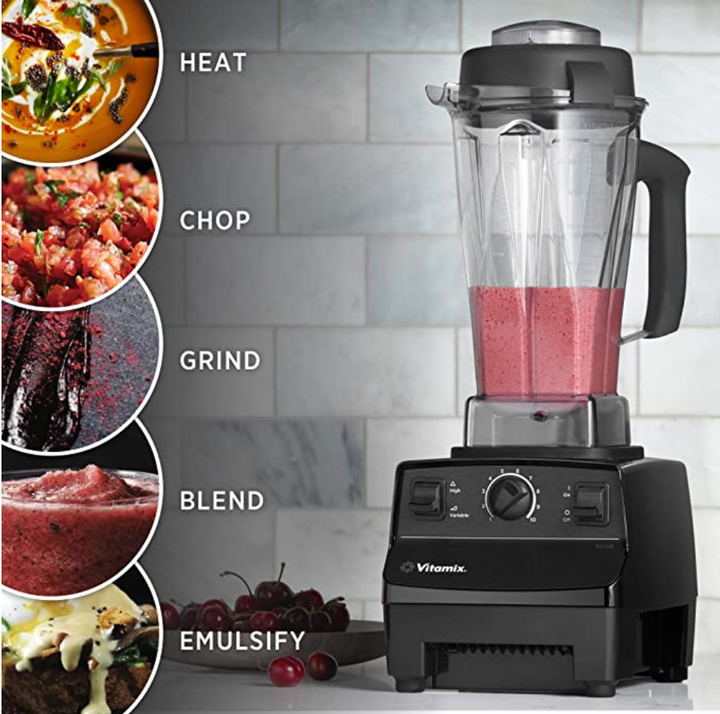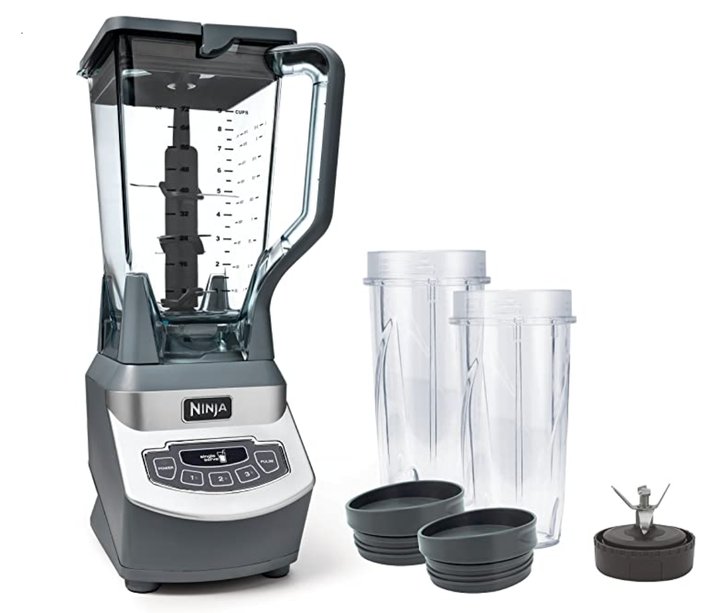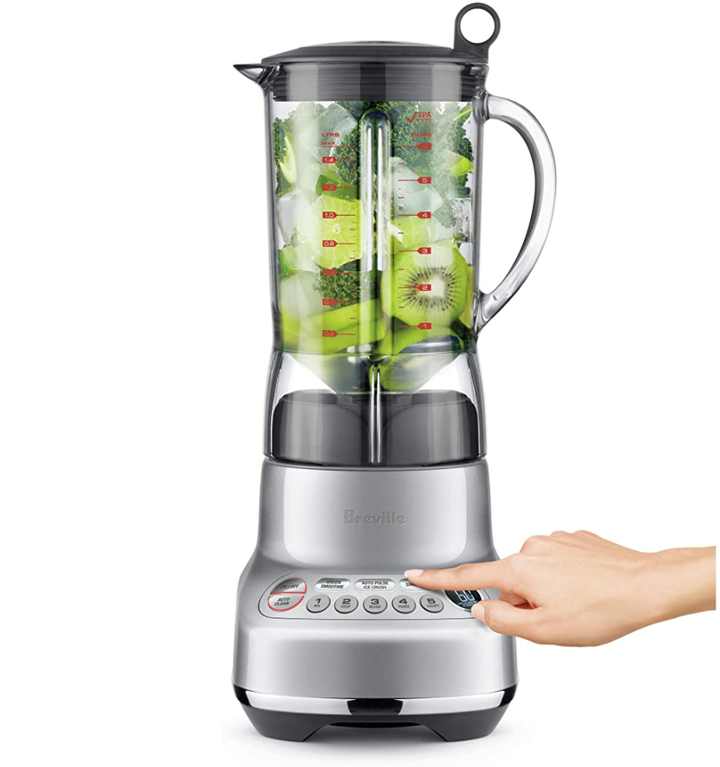You can buy a standard Oster blender for $25, but if you’ve got your heart set on a Vitamix, it’ll set you back about $400. What gives?
There are so many different blender options on the market, with different features, blade configurations and jar shapes. While there isn’t a specific checklist of features that will guarantee you’re buying a quality blender (definitely check out reviews before buying), the experts interviewed for this story all agree that when it comes to blenders, you get what you pay for.
This doesn’t mean you need to run out and buy a Vitamix, but if you’re looking for a quality mid-priced blender that doesn’t require you to constantly intervene during the blending process, you’re looking at a $100-$200 investment.

Khoran Horn, CEO of VIII XII Hospitality and chef-founder of Stripp’d Juice, told HuffPost that the household blender has evolved beyond being just a morning appliance for smoothies and the like. These days, home cooks are tasking their blenders with making soups, nut butters and even grinding grains to make flour. Blenders are expected to perform more challenging tasks on a regular basis, so if you’re using it for those purposes, it makes sense to invest in a higher quality piece of machinery with a powerful motor.
With all this in mind, here’s what you need to know about blenders.
With higher-end blenders, you’re typically paying for a better design and a more powerful, reliable motor
For Seamus Mullen, chef at the Institute of Culinary Education, the difference between cheap and expensive blenders is significant.
“A cheap blender is unlikely to have a powerful and reliable motor, and as a result your recipes may not have the correct texture,” he said. Having a more powerful blender can be the difference between a perfectly smooth soup and a lumpy one.
“Inexpensive blenders tend to not be as thoughtfully designed as their more expensive counterparts, and the components are often difficult to clean and store,” he said. “A well-engineered blender is one of the most important pieces of kitchen equipment you can own and it makes sense to invest here.”
Mullen’s brand of choice is Vitamix. “Honestly, there is no blender that stands up to the Vitamix,” he said. “It’s the gold standard in the professional kitchen, made in the USA, extremely powerful and reliable, and a joy to use.”
High-end blenders tend to do a better job at striking the balance between clever design and a powerful motor, both of which are crucial to successful blending. “The most frustrating thing with a blender is when you put everything in it, you turn it on, and nothing moves after the first couple seconds ― everything jams up,” Lisa McManus, executive editor of America’s Test Kitchen Reviews, told HuffPost. An effective blender will grab the ingredients you put into it, engage with them and keep everything moving along.
Having a powerful motor is helpful, but it isn’t everything. “You basically want all the ingredients to move in a vortex so that they travel down to the base, get chopped up, and then get pushed up again while other stuff gets drawn down,” McManus explained. “Too many blenders don’t have that ability to move things. They are either too weak or they are overpowered but the jar isn’t designed well so stuff gets blown to the walls and the blades can’t reach.”
Design elements like a tamper, a tool used to push down ingredients toward the blades while the blender is running, can provide a helpful assist in the blending process. The Vitamix is perhaps the most well-known example of a blender with a tamper, but models like the Hamilton Beach Professional Quiet Shield Blender ($160 on Amazon) have them as well.

As for the Ninja blenders (which cost around $99) with three sets of blades that go up the length of the blender, in testing McManus found that they didn’t process foods like leafy greens beyond a certain point. This led to finding tiny pieces of greens (which she refers to as “micro salads”) in smoothies rather than a homogenous mixture. “It seems like a great idea, the blades going to the food rather than the food to the blades, but we did not find that it performed better,” she said. In addition to performing more like a food processor than a blender (chopping ingredients but not creating the vortex movement), McManus added that handling the stem with the three blades when it came to cleaning the blender was not pleasant.
Cheaper blenders may eventually give you your desired result, but it will take some time
In her several years of testing blenders, from inexpensive to mid-range to high-end, McManus has found that one of the characteristics that sets these blenders apart is the amount of human intervention needed to achieve the desired result.
A high-quality blender will blend up your ingredients with the push of a button and very minimal intervention, if any at all, McManus explained. A blender of average quality will require stopping the blender, opening it, pushing ingredients down, closing it, starting again, repeating and likely making a mess on your counter. You may get the same result with some fiddling around, but it’ll definitely take you longer to get there. A bad blender will get stuck, doesn’t break down ingredients, and no amount of fussing will get you to the smooth result you’re looking for.
In short, saving up and investing in a higher quality blender can save you time and aggravation.
High quality blenders can perform a wide range of tasks
A blender may come with a variety of buttons indicating different functions like mix, chop, blend, puree and liquify. Whether these and other function buttons actually accomplish distinct tasks and aren’t simply marketing gimmicks depends on the quality of the blender and is often reflected in the price point.
“Better blenders can do both the high-powered and the more delicate tasks,” McManus told HuffPost. “Instead of having a million buttons that all do the same thing, the variation in the speeds is real rather than perceived.” She explained that in order to accomplish a range of tasks, from emulsifying eggs and oil to make mayonnaise to blending frozen fruit chunks and leafy greens to make smoothies, a blender has to be able to go low and slow and fast and high.
Versatility is a key quality Horn looks for in a blender, as he uses it to make breakfast, lunch and dinner. Features like emulsifying, heating and (of course) blending are crucial in his book. “I use my blender to make cold drinks, hot soups, sauces and even breakfast bowls thick enough to turn upside down and they don’t move,” he said.

When buying a blender, keep in mind what you’re planning on using it for
For the occasional blender user who may only break it out to make frozen margaritas on hot summer days, there’s no need to spend big bucks on a blender. For the average consumer, a mid-priced blender should offer the versatility and reliability required for performing everyday and occasionally more challenging tasks.
“You need to consider what you’re making in it and what kind of power level that requires,” McManus said. “When choosing a blender, I would try to make sure it can do what you’re planning on using it for.”
While the Vitamix 5200 ($379-479.95 on Amazon) is America’s Test Kitchen’s top choice for high-end blenders, for the average consumer McManus recommends the Breville Fresh & Furious Blender ($199.95 on Amazon), the favorite in the mid-priced blenders test. “It’s really solid and does everything you want it to do,” she said. “It has the flexibility to do the occasional frozen drink but it can also make frozen smoothies and nut butters. It’s $200 but you gotta shell out a little bit if you don’t want to have to keep buying a new one every now and then.”
If you’re planning on using your blender every day, especially if it will be regularly challenged with heavy duty tasks like grinding nuts into nut butter or breaking down leafy greens and frozen fruit for daily smoothies, a high-end blender like a Vitamix is definitely worth the splurge. “The single most used kitchen appliance in both my home and business is our prized blender,” Horn said. “Because we really tax it, expect it to last, and use it for nearly every meal, a smart investment and splurge here is the trusty Vitamix.”